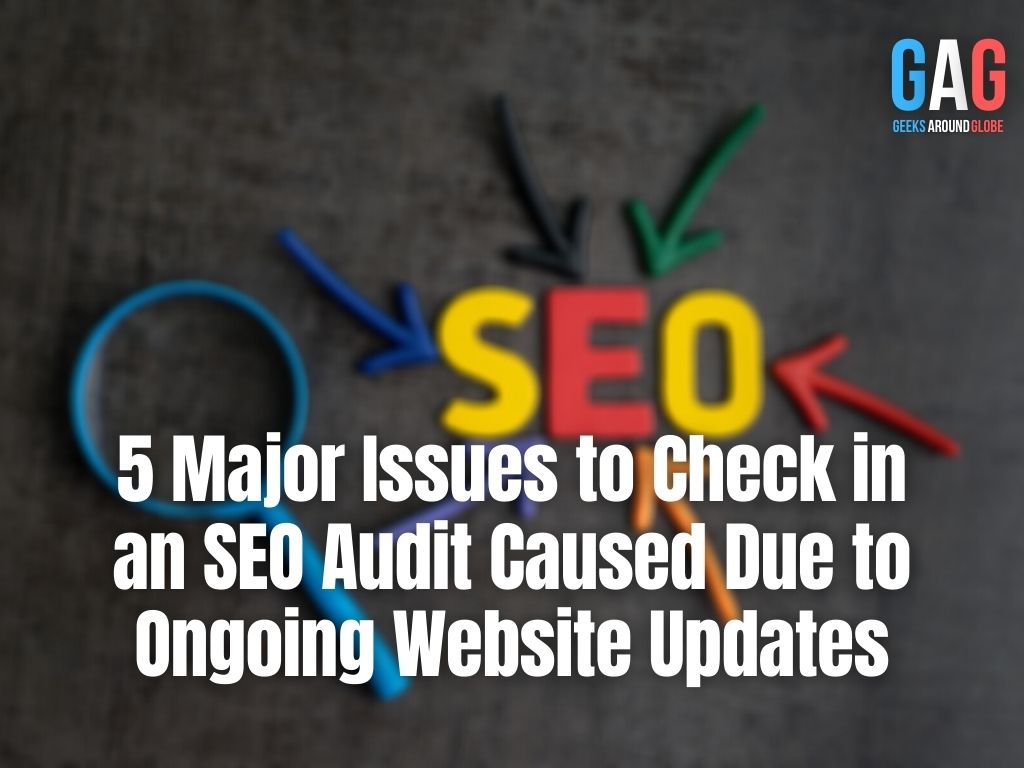Mastering the fundamental aspects of e-commerce SEO is essential for attracting clients, boosting conversions, and increasing sales.
But don’t be fooled into thinking that SEO revolves around just 8 elements; it’s a much broader field.
Nevertheless, by ensuring proficiency in these critical components, you’ll set yourself on a promising path toward crafting an effective SEO strategy tailored to your needs and those of your clients. If all else fails, don’t forget that you can elevate your e-commerce game with a leading SEO agency.

1. Understanding Your Audience and Industry
When crafting an effective ecommerce SEO strategy, it’s crucial to focus on your industry and the people you want to reach.
Here are some key questions to consider:
- What industry do you operate in?
- Who are your main competitors?
- Where do your competitors primarily operate?
- How are your competitors approaching their SEO strategies?
- Where is the competition most intense?
Answering these questions will guide your next steps in shaping your SEO strategy. As you gather this information, the various aspects of your strategy will become clearer, helping you decide on the best course of action.
2. Keyword Research
Once you’ve established your target audience and gained insights into SEO trends within your industry, it’s time to delve into keyword research. This step is essential for identifying the most relevant user intentions and discovering what your audience is actively searching for.
However, it’s not just about identifying keywords; it’s equally important to understand how your audience searches for information. Even slight variations in keyword choice can significantly impact the success of your SEO strategy.
Moreover, staying informed about industry market trends and having a deep understanding of your buyer personas is crucial. These factors play a pivotal role in shaping your overall SEO strategy and ensuring its effectiveness.
3. User Intent in SEO
User intent plays a pivotal role not only in the success of any e-commerce business but also in an SEO campaign, making it a crucial consideration.
For instance, let’s take an example: your target audience typically begins their search with the phrase “best SEO company.”
Yet, as you delve into keyword research, you may stumble upon variations like “SEO company near me,” “SEO company,” and “SEO company that gets things done.” Remarkably, each of these variations can yield a substantial boost in traffic directed toward your landing page, occasionally increasing it by as much as tenfold.
Incorporating these variations into your overall SEO strategy would be a wise move, wouldn’t it?
Had you not conducted this thorough keyword research and adjusted your approach to reflect shifts in audience search behavior, you might have missed out on these valuable, deeper keywords.
The depth of your keyword research matters. The more you delve into it, the more opportunities you may discover in the long run.
Pro tip: You can elevate your SEO and e-commerce game with a leading SEO agency. Just make sure you find one with a proven track record.
4. Analytics and Reporting
Let’s be straightforward: Nothing is more critical to the success of an SEO campaign than having precise and reliable reporting.
Without accurate reporting of the campaign’s results, it becomes nearly impossible to make the necessary adjustments that every SEO campaign demands.
Here’s another reality check: not every industry requires daily or even weekly changes to their keyword strategies. In fact, for most industries, adjustments every six months are sufficient.
However, if you operate in a fast-paced, rapidly evolving industry where market dynamics change frequently, it’s essential to consider integrating quarterly or even bi-monthly keyword research tasks into your SEO process. This will help you stay ahead of the curve and ensure that you are targeting precisely what your audiences are searching for in the ever-evolving landscape.
Let’s connect the dots between this concept and analytics reporting. When you attribute keywords to specific landing pages, it becomes crystal clear which keywords and landing pages are the main catalysts behind your SEO efforts and your overall SEO strategy.
By mastering this process, you can make necessary adjustments with precision and, eventually, stay ahead of emerging trends in your industry.
This underscores the critical importance of accurate analytics reporting. If your analytics report suggests that you’re receiving around 6,000 visits per month, but a substantial portion of that traffic is from bots, can you genuinely consider your campaign successful?
5. Mobile SEO

Google’s mobile-first index has become the dominant standard for search, prioritizing mobile-friendly websites in its indexing process. However, it’s essential to understand that this shift doesn’t exclude desktop sites; they can still rank well in search results if they provide the most relevant content for a query. Nevertheless, Google’s emphasis on mobile-first heralds a new era, one that prioritizes simplicity in search results to cater to a broader audience.
I’d like to offer a word of caution and emphasize that the following statement represents my viewpoint: You might find it surprising. “Dumbed-down”? Aren’t search results supposed to become smarter? Unfortunately, the reality is that mobile devices represent the lowest common denominator in search today.
Web designers will no longer have expansive canvases to create intricate website designs. Instead, the trend is moving towards a more standardized approach, compatible with both iPhones and Android devices. Ensuring that your website functions seamlessly on both platforms is now a necessity.
Putting aside any grievances about the direction mobile SEO is heading, it’s crucial to acknowledge that mastering mobile SEO is vital. As Google’s mobile index continues to expand, we can anticipate algorithm shifts and updates, much like we’ve seen with the traditional index.
It is advisable for all websites to embrace mobile-friendly, responsive designs going forward.
The rationale behind this recommendation is to ensure that all versions of your site stand an equal chance of being indexed and staying competitive in the evolving mobile-first index landscape.
6. Crawling
Crawling is the process through which search engine bots find and explore your website.
If your website’s structure is disorganized, your internal links are not well-optimized, or worse, if you lack a sitemap.xml file (a critical component), it becomes challenging for search engines to effectively crawl your site.
Another factor that can impede crawling and indexing is the presence of significant 404 errors on your website.
Additionally, technical configurations can hinder spider bots from properly crawling your site. One common issue that SEO professionals often address is ensuring that the line “Disallow: /” is not present in your robots.txt file.
It’s essential to understand that this directive is distinct from “disallow: “, and the subtle difference between them can have a profound impact on whether search engines can crawl and index your site.
The first directive, “Disallow: /,” instructs your server to block all search engines from crawling your site.
The second one allows unrestricted access to all robots.
7. Indexing
Indexing is a distinct process separate from crawling, though the two are related.
If you mishandle actions like “noindex” or “nofollow,” it can have a detrimental impact on the indexing of your website. This is similar to making an oversight like failing to include a sitemap.
While it’s possible to work around not having a sitemap by using the “Fetch as Google” feature in Google Search Console, it’s generally more straightforward and efficient to create a sitemap and submit it for Google’s consideration.
Another significant pitfall to avoid is canonicalizing your pages without addressing trailing slash issues. These types of issues can result in Google indexing multiple versions of your pages, often in duplicate or triplicate, which can disrupt Google’s ranking algorithms.
As a result, it’s paramount to ensure that your website is fully functional and easily crawlable from the outset. Waiting until an audit reveals a missed setup step for your new site can lead to avoidable complications.
When indexing isn’t executed correctly, it means that certain parts of your website might not be considered during the crawling process. This oversight can result in significant problems with your site’s ranking performance.
That’s why conducting a comprehensive website audit is crucial. It allows you to identify and address issues that might have otherwise gone unnoticed. These issues can have a substantial impact on your website’s overall performance.
8. Content
Content remains one of the primary means through which SEO professionals acquire links to improve rankings and generate traffic for websites. However, it’s an area where improper execution can become a major headache for a website or its author.
Not all content is created equal. There’s a distinction between spammy content and authoritative, non-spammy content. Generally, if you manually craft your content, you’re on the right track. You don’t need to obsess over things like reading levels or complex sentence structures to create content that ranks well. However, it’s essential to debunk the myth that merely creating great content is enough.
High-quality content should have the potential to go viral, resonate with your audience, and leave a lasting impact on readers, to the extent that they become interested in purchasing from you. Moreover, this viral potential can help you earn natural links, which are crucial for link building.
Is it always possible to get content right from the start? No.
You can have all the procedural aspects in place: well-executed content, solid keyword research, and proper optimization. Yet, sometimes, the content inexplicably performs poorly.
There are certain elements you can control when it comes to content, such as keyword targeting, on-page optimizations, meta enhancements, error-free text, and optimized images. However, there are instances where, for reasons that are not always apparent, the audience simply does not respond favorably to the content.
In such cases, it’s not easy to pinpoint why the content fell short. You can’t label well-written content as “awful” or attribute the failure to arbitrary factors that are hard to quantify.
Sometimes, content just doesn’t resonate, and it’s not necessarily your fault, your audience’s preference, or the timing. It can be frustrating when this happens, but it’s essential to persist in refining your content. Eventually, the pieces may fall into place, and your next piece of content could be a home run. The key is to keep striving for content excellence and adapt as needed.
Conclusion
SEO is a multifaceted and dynamic field that requires a nuanced understanding of various elements, including audience targeting, keyword research, mobile optimization, crawling, indexing, and content creation. Each of these components plays a vital role in determining a website’s visibility and success in search engine rankings.
While mastering these aspects can be challenging, it is essential for anyone aiming to make their mark in the digital landscape. SEO professionals must stay updated with industry trends and continuously adapt their strategies to the evolving algorithms and user behaviors.







